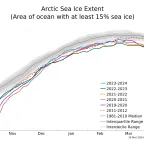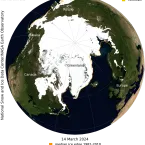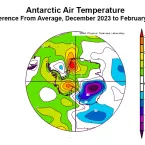Our Research
Related News & Stories

The Exchange for Local Observations and Knowledge of the Arctic (ELOKA) team members Noor Johnson, Tash Haycock-Chavez, Joshua Brown (virtual attendance), and Matt Druckenmiller attended the Arctic Observing Summit (AOS), a biannual meeting focuse

Arctic sea ice has likely reached its maximum extent for the year, at 15.01 million square kilometers (5.80 million square miles) on March 14. The 2024 maximum is the fourteenth lowest in the 46-year satellite record.


Canada's Indigenous Guardians programs support Indigenous environmental stewardship and land management through a network of over 85 First Nations, Inuit, and Metis-led programs across the country.

During February, Arctic sea ice extent increased along the lower 10 percent interdecile value, with the average monthly extent tied for fifteenth lowest in the satellite record.
